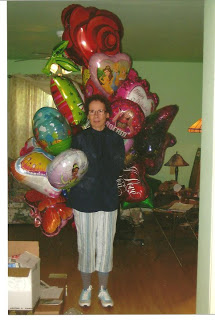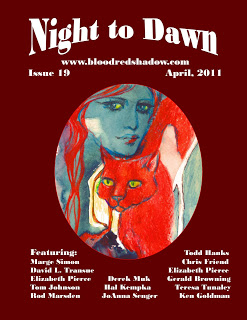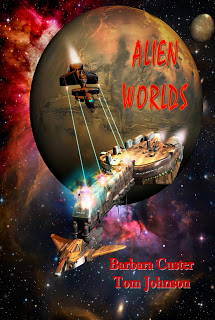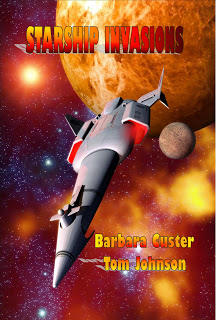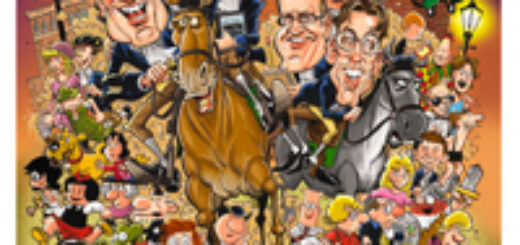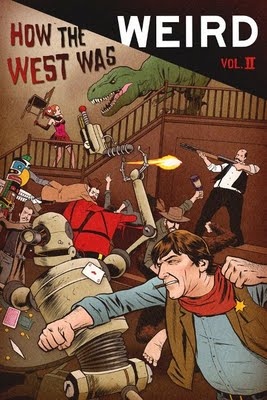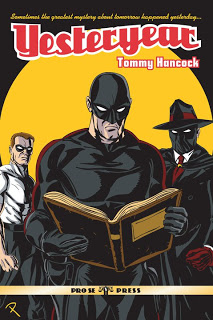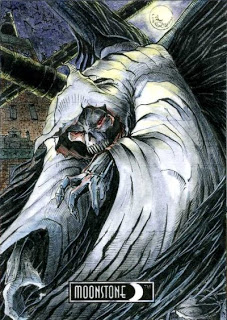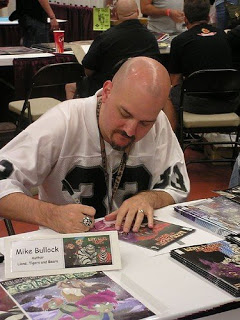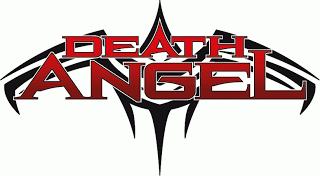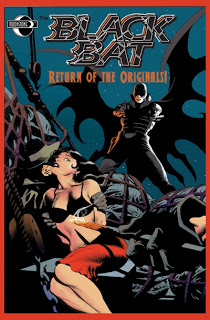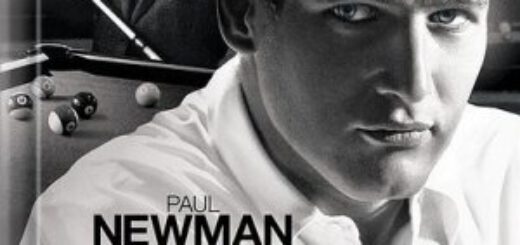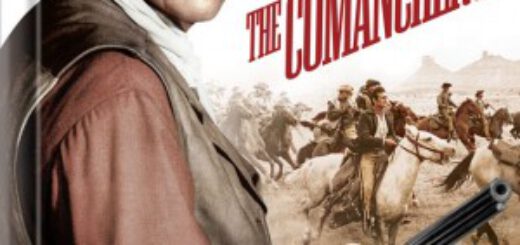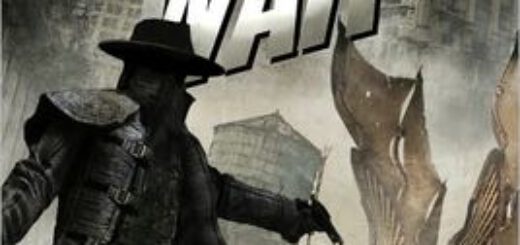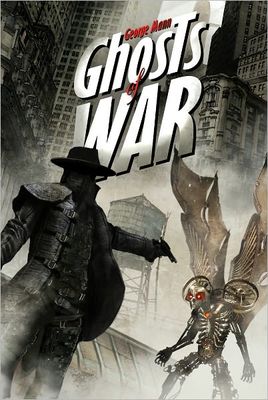Tagged: novel
National Cartoonist Society Winners Announced
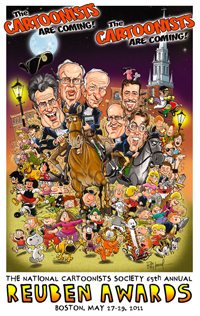 The annual National Cartoonist Society annual awards were awarded Saturday night. The prestigious Reuben Award for cartoonist of the year went to Richard Thompson for the newspaper strip Cul de Sac. Jill Thompson was selected as best comic book artist for Beasts of Burton, beating out Stan Sakai and Chris Samnee, and Joyce Farmer and her Special Exits took home the prize for graphic novel, beating out Daryn Cooke and James Strum.
The annual National Cartoonist Society annual awards were awarded Saturday night. The prestigious Reuben Award for cartoonist of the year went to Richard Thompson for the newspaper strip Cul de Sac. Jill Thompson was selected as best comic book artist for Beasts of Burton, beating out Stan Sakai and Chris Samnee, and Joyce Farmer and her Special Exits took home the prize for graphic novel, beating out Daryn Cooke and James Strum.
Jeff Parker and Steve Kelley were designated best newspaper comic strip cartoonists for Dustin, Mike Lester took the book illustration award for The Butt Book, and Glenn McCoy won the newspaper panel cartoon award for The Flying McCoys. Other prize winners included Michael McParlane for newspaper illustration, Gary McCoy for gag cartoons, Jim Benton for greeting cards, Anton Emdin for magazine illustration, Gary Varvel for editorial cartooning, Dave Whamond for advertising illustration, Dave Filoni for television animation (Star Wars: The Clone Wars), and Nicolas Marlet for feature animation (How to Train Your Dragon).
The NCS 65th annual awards dinner was held in Boston over the past several days. The artwork (above) was contributed by Mad Magazine’s Tom Richmond.
FORTIER GOES BACK TO THE THRILLING DAYS OF ‘YESTERYEAR’!
One of the most widely recognized facts regarding American comic book heroes is that they actually evolved out of the Depression Era pulp magazines. Fans of both media are well aware that the likes of Batman and Superman were the literary children of characters such as the Shadow and Doc Savage. Tommy Hancock employs this historical theory against which to set his first novel, “Yesteryear.” Hancock, the winner of this year’s Pulp Ark Award for Best New Writer, had earned that title based on his short fiction. Now with this novel length drama, he cements that position soundly with a work of deft imagination heralding past days of American glory.
Fortier takes on Koontz’s FRANKENSTEIN-LOST SOULS!
MOONSTONE MONDAY-BULLOCK ANNOUNCES ORIGINAL NOVEL
AP: You’re obviously a writer and creator influenced by the whole ‘Pulp’ style. What aspects of that style have had the most impact on you, maybe favorite authors and/or characters from the classic days of Pulp?
AP: What does the future hold for Mike Bullock? More than one Death Angel novel? Anything else?
Review: ‘The Hustler’
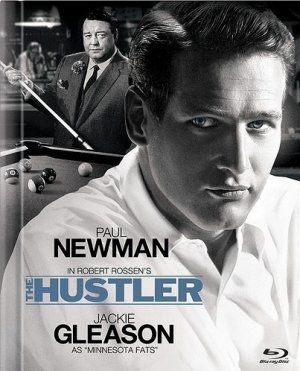 Far too films hold up to the test of time, their iconic nature re-evaluated through a modern prism and found wanting. Memorable performances or screen characters suddenly look one-dimensional or wanting. Then there are those that grew in stature through the years as audiences and critics catch up to the creators’ vision. Those are the ones that are hailed in retrospectives, make it to the National Film Registry and get the deluxe treatment when released on home video. The Hustler, the 1961 film about pool and people, is one such film and is this week making its Blu-ray debut courtesy of 20th Century Home Entertainment.
Far too films hold up to the test of time, their iconic nature re-evaluated through a modern prism and found wanting. Memorable performances or screen characters suddenly look one-dimensional or wanting. Then there are those that grew in stature through the years as audiences and critics catch up to the creators’ vision. Those are the ones that are hailed in retrospectives, make it to the National Film Registry and get the deluxe treatment when released on home video. The Hustler, the 1961 film about pool and people, is one such film and is this week making its Blu-ray debut courtesy of 20th Century Home Entertainment.
It used to be, pool sharks could tour the country, play high stakes games and eke out a living of sorts. Legendary pool players had a word-of-mouth reputation every bit as powerful as celebrities made famous by ESPN. The great novelist Walter Tevis captured these players and their world in his 1959 novel, prompting Robert Rosen and Sidney Carroll to adapt it to the big screen.
“Fast Eddie” Felson is the wandering pool player, with no roots, no life beyond the end of his cue stick. He arrives in the small, dark town of Ames specifically to challenge the legendary Minnesota Fats – and loses. What happens next propels the rest of the film and becomes a study of pool players, friends, and lost souls searching for a better way.
Felson is a brilliant player but empty inside, yearning for something more but not sure what that is or how to get it. All he knows is he’s the best and wants to prove it time and again so being humbled by Fats rankles. And while he’s lost, he discovers there are others who don’t know just how lost they are, a point made when he meets the drunken Sarah Packard. (more…)
The Comancheros
 At a time when movie stars were truly larger-than-life and iconic, few stood taller and were more memorable than John Wayne. The Duke more or less played himself, the tall, laconic keeper of the moral code regardless of era or genre. He’s best remembered for his work in Westerns, ultimately earning his one Oscar for True Grit, a tribute to a career spent along the dusty trails of a bygone America.
At a time when movie stars were truly larger-than-life and iconic, few stood taller and were more memorable than John Wayne. The Duke more or less played himself, the tall, laconic keeper of the moral code regardless of era or genre. He’s best remembered for his work in Westerns, ultimately earning his one Oscar for True Grit, a tribute to a career spent along the dusty trails of a bygone America.
Bit by bit, Wayne’s oeuvre is being preserved on DVD and now Blu-ray, with [[[The Comancheros]]] being the most recent offering. In time for the perfect Father’s Day gift, the deluxe package from 20th Century Fox Home Entertainment offers up one of Wayne’s last big Westerns just as interest in the genre was beginning to wane. The movie is well regarded by many Western fans and Elmer Bernstein’s score has lived on, well beyond the film itself, used elsewhere ever since (including The Simpsons). It also has the historical footnote of being the final film from director Michael Curtiz, beloved for his earlier work on The Adventures of Robin Hood and Casablanca. He was laid low early on by cancer and Wayne himself took over much of the directing but refused credit. Second unit action sequences were handled by Cliff Lyons. The unfortunate many hands approach probably led to the film feeling incredibly uneven, talky without much punch to the dialogue sequences, and sluggishly paced for the first third. (more…)
ALL PULP REVIEWS-FORTIER TAKES ON ‘GHOSTS OF WAR’!
Reviews from the 86th Floor: Barry Reese looks at
 THE ADVENTURES OF DODGE DALTON AT THE OUTPOST OF FATE
THE ADVENTURES OF DODGE DALTON AT THE OUTPOST OF FATE
Sean Ellis
ISBN 978-0982609996
Sequels can be funny things – deviate too much from what the original successful and people wonder what went wrong. Adhere too much to the first one’s formula and people cite you for being unoriginal. The Adventures of Dodge Dalton At The Outpost of Fate manages to dance along that delicate line that’s needed to create a worthy successor to last year’s debut. Sean Ellis reunites us with a character who’s a canny mix of Indiana Jones and Dirk Pitt, with the intriguing setup that our main character is the ghostwriter for the adventures of the “real” hero.
Ellis manages to infuse his novel with romanticism and good old-fashioned by-the-seat-of-your-pants adventure. Without giving too much of the plot away, this is another globetrotting epic with plenty of narrow scrapes for our heroes and a satisfying ending.
It’s inevitable that a second adventure seems less “new” than the original but Ellis is more comfortable now and the characters more nuanced. The Dodge Dalton series is one of the best New Pulps to come along.
I give it a solid 4 out of 5 stars!

